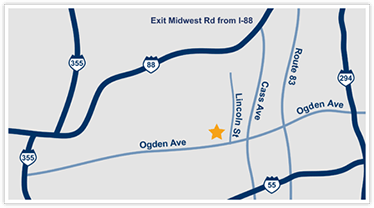How Much Does Gold Brick Weigh?
Yes, pure gold has gained a new popularity and appreciation as the valuable metal that everyone in the world has long cherished for its commodity and malleability. From small flakes to large, heavy bricks, this precious metal continues to be a hot commodity. You may know the value of gold, but have you ever considered how heavy it is? Better yet, have you considered just how heavy a gold brick is? Keep reading to learn more about this chemical element’s “weight in gold”.
How Heavy Is Gold?
Gold has an atomic weight of 196.96657 u, though it’s typically measured in troy ounces. (For reference, a troy ounce is 31.1 grams, or 0.07 pounds.) Compared to other metals, it’s rather heavy. This is because of gold’s high density of 19.32 grams per cubic centimetre. This density is caused by the heaviness of each of gold’s atoms. Though you won’t feel the heaviness of a gold fleck you find in an Illinois creek in your hand, the weight of gold can add up pretty quickly if you’re talking quantities of gold jewelry, coins, or even bars of gold. Now that’s a completely different story.
How Heavy is Gold Brick?
A standard gold bar weighs 12.4 kilograms (which is 400 troy ounces, or 27.4 pounds). Banks across the world use this weight. In some cases, a 1-kilogram brick may be the standard (which is 32.15 troy ounces, or 2.2 pounds).
Honestly, it’s hard to determine the exact weight of a single gold brick because of the way it’s created. For example, let’s say you fill a mold with melted down, liquid gold. Now let’s say you pour some liquid gold into another mold but don’t completely fill it. Even though they’re both gold, one is ultimately heavier than the other.
How Big Is Gold Brick?
There are plenty of different sizes of brick out there. Here are some of the more common sizes for gold bars:
| Gold Bar Weight | Dimensions |
| 1 troy ounce | Width: 24 mm (0.95 inches) Length: 42 mm (1.65 inches) Depth/Thickness: 2 mm (0.08 inches) |
| 100 grams (3.22 troy ounces) | Width: 31 mm (1.22 inches) Length: 55 mm (2.17 inches) Depth/Thickness: 3 mm (0.12 inches) |
| 1 kilograms (32.15 troy ounces) | Width: 40 mm (1.58 inches) Length: 80 mm (3.15 inches) Depth/Thickness: 18 mm (0.71 inches) |
| 12.4 kilograms (400 troy ounces) | Width: 94.5 mm (3.72 inches) Length: 272 mm (10.7 inches) Depth/Thickness: 51.5 mm (2.03 inches) |
Who Buys Gold Bricks?
Reputable gold buyers can be found in any major city with a simple google search. However, gold bricks can be worth millions of dollars depending on their size which not all gold buyers can handle. If you’re having trouble finding a buyer for your gold bricks, just call us at 630-381-0649 or check out our gold selling page for more details! We are capable of handling any gold sale in the United States.
What Are the Various Types of Gold Bricks?
The shape of a gold brick gives it its name. Also referred to as a gold bar, manufacturers pour this type of gold into a mold that takes on a bar or brick-like appearance.
The two types of bricks are minted bars and cast bars. The primary differences between the two are their pricing and overall appearance. Here’s a look at each of these types:
Cast Gold Brick
This type of bar is often the result of melted gold. Cast gold is also known as molded or poured brick. The casting process for this type of brick has been around for at least 6,000 years. Over time, manufacturers have developed alternative casting methods for cast gold.
To create a cast bar with a traditional approach, manufacturers use a crucible to melt gold into a liquid state. Then, they pour or cast the gold into a mold with the chosen dimensions. The gold solidifies and, once it’s cooled, the smelter can remove it from the mold. In some cases, the manufacturer may engrave or stamp the brick.
A more modern method is better for creating smaller cast bars that are 1 kilogram or lighter. The manufacturer gathers refined gold of the proper purity, either in granule form or in small cut pieces or thin strips. These small pieces are placed inside a crucible or a mold, which is then placed on a balance to get the required weight. Then it’s melted down in the furnace.
Though the dimensions for these cast bricks do vary, they typically take on a rectangular shape. Manufacturers can also make them into round, rod, or square shapes. Unlike minted bricks, cast bricks are simple, cheaper in price, and are more original given the creation process.
Minted Gold Bar
Minted gold bars are cleaner and smoother than cast bricks and are most likely the type of brick you’ve become accustomed to seeing. They typically cost more given the time and effort manufacturers have to put into their creation. Minted bricks also allow for more intricate designs and engravings than cast bricks do.
Typically, minted bars start off as cast bars. Then, they’re compressed by a machine to create a uniform length. Sometimes, manufacturers use a continuous casting machine to create a long strip of gold with a certain width and thickness. The gold metal is then cut into certain lengths, free from any marks.
Manufacturers have to pay close attention to detail to ensure they meet certain weight, width, and thickness requirements for these bars. The gold then goes through the striking process, which starts off by it being placed in a furnace to improve its malleability. After that, the bar is polished, cleaned, and dried to perfection.
How Much Is Gold Bar Worth?
Whether looking at the market worth of gold, you need to remember that the price of gold fluctuates. In other words, even a small bar of gold can be worth a lot of money, but it’s hard to say exactly how much.
In addition, the quality of the gold itself needs to be taken into consideration. Gold bars usually consist of 24-karat gold, meaning they’re pure gold down to their core.
Check out our other pages if you’re looking for more information on selling or buying gold. We can handle any precious metal purchase you need!
Tags: gold, gold bars, invest in gold



